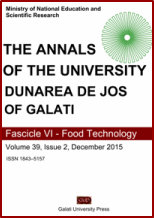Biotechnological strategies for enhancing the nutritive and nutraceutical values of tomato (Solanum lycopersicon)
Abstract
Tomatoes are a unique functional food and a natural reservoir of many health promoting nutrients, antioxidants, dietary fibres and chemopreventive nutraceuticals. They are particularly rich in lycopene which has been associated with the prevention of cardiovascular disease and cancers of the prostate and the gastrointestinal tract. As an important vegetable worldwide, tomatoes have drawn the attention of many researchers. Thus, numerous investigations have been conducted and various improvement strategies applied for enhancing the functionality of this medicinal food geared towards disease prevention, global health and well-being. Molecular breeding has produced a number of tomato lines with enhanced levels of lycopene, β-carotene and xanthophylls. Over expression of certain genes have generated tomato fruits with enhanced ascorbic acid levels and folate accumulation up to 25-fold. Plant hormone technology has been used to enhance tomato minerals, antioxidant vitamins, lycopene, β-carotene, flavonoids and phenolic compounds in tomato fruit tissues. Manipulation in soilless culture solutions is valuable for enhancing the antioxidative capacity of tomatoes, vitamin C, flavonoids, lycopene, and β-carotene in fresh fruits. In addition, the spraying of nutrients, such as potassium, in field conditions has a strong stimulatory effect on
lycopene contents of tomatoes. Transgenic strategies are also being adopted. These strategies offer a rapid way to introduce desirable traits into the phenotype and differ from other approaches in that novel genetic information is introduced directly into the plant’s genome. An important and current trend in the improvement of functional foods is to shift from enhancing single nutritional
compounds towards enhancing multiple nutrients and phytochemicals in order to harness their synergistic interactions. This could be achieved by the use of strategies having pleitropic effects such as bioregulators, multigene engineering and regulative genetic elements. However, the full potential of these technologies has not been realised and the relative gap between risk assessment and regulatory threshold desires much attention. These biotechnological strategies for enhancing the nutritive and nutraceutical values of the tomato food crop are discussed in this article.


